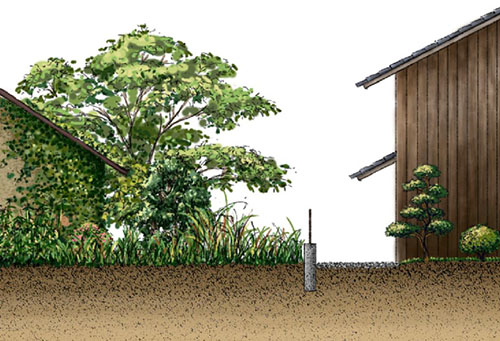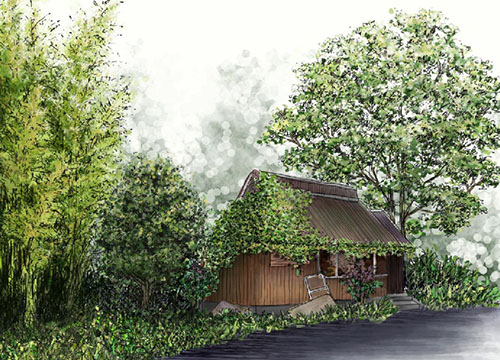Plants that grow on the lots of vacant houses can be borrowed to enrich neighborhood landscape.
- Juri Wakisaka surveyed in detail the plants that grew on the lots of vacant houses along the main streets of the entire area of the city of Higashi-ohmi. She classified the combinations of the plant types, and analyzed the elevations around the adjacent land boundaries. Through the research, she found a common point of tea ceremony gardens in multi-layer structure of the plants. She also found a common point of both pond gardens and dry gardens because the plants were visible but could not be reached from the adjacent lots. From these findings, she came to the unique conclusion mentioned above.

drawn by Wakisaka
Even though there are several precedents that the vacant lots have been used as open spaces, the plants on the lots of vacant houses have never been borrowed to enrich community landscape. Wakisaka’s findings imply an epoch-making proposal to form streetscapes by using what already exists as it used to be, just like the manner of Japanese garden making. In order to realize this proposal, it is necessary to research on the following subjects. These are the methods of qualitative evaluation of the plants on the lots of vacant houses, the ways of pruning and maintaining them and the rules or the systems of co-management of them.
-
more information
Juri Wakisaka, Shuichi Murakami (2017) Streetscapes Composed with Plants Growing at Vacant House Lots : A Case Study of Main Roads in Higashiomi City : Reports of the City Planning Institute of Japan, No.16 : 166-169

drawn by Wakisaka





